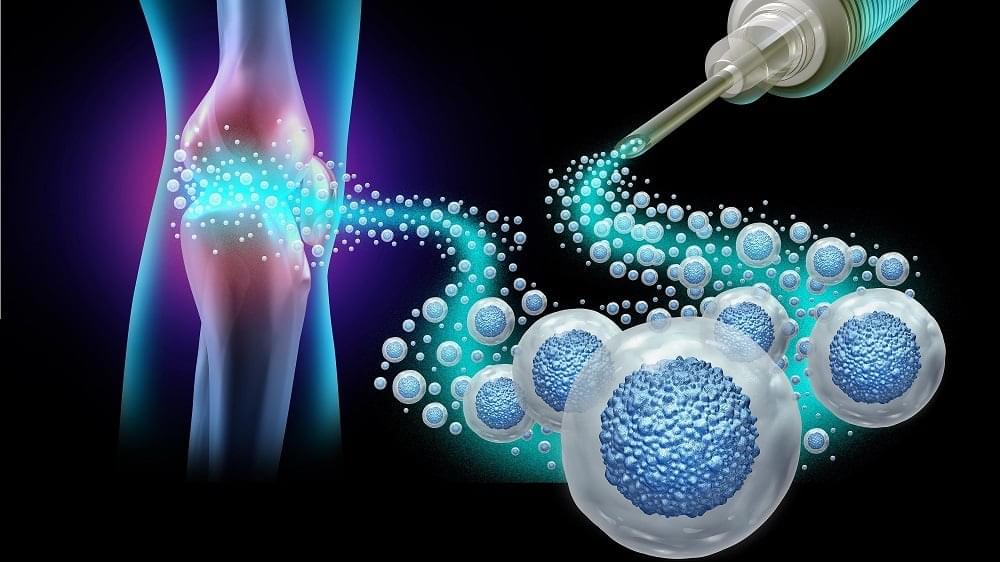We are dealing with very extreme events.




Novel magnetic nanodiscs could provide a much less invasive way of stimulating parts of the brain, paving the way for stimulation therapies without implants or genetic modification, MIT researchers report.
The scientists envision that the tiny discs, which are about 250 nanometers across (about 1/500 the width of a human hair), would be injected directly into the desired location in the brain. From there, they could be activated at any time simply by applying a magnetic field outside the body. The new particles could quickly find applications in biomedical research, and eventually, after sufficient testing, might be applied to clinical uses.
The development of these nanoparticles is described in the journal Nature Nanotechnology, in a paper by Polina Anikeeva, a professor in MIT’s departments of Materials Science and Engineering and Brain and Cognitive Sciences, graduate student Ye Ji Kim, and 17 others at MIT and in Germany.

Under the right circumstances, electrons can actually “freeze” into a bizarre solid form. Now, physicists at Berkeley Lab have created and taken the first ever direct images of this structure.
At low temperatures and densities, groups of electrons can crystallize into a solid form known as a Wigner crystal, named after theoretical physicist Eugene Wigner who first predicted their existence in the 1930s. It was only a few years ago that scientists first directly detected and imaged them.
Now, a team has for the first time imaged a new quantum phase of electrons – a related structure called a Wigner molecular crystal. Basically, it’s the same solid electron phase, except that groups of electrons settle in each place on a lattice instead of single electrons.


A 100+ page detailed analysis on 18 LLMs for embodied decision making.
ArXiv: https://arxiv.org/abs/2410.07166 Website: https://embodied-agent-interface.github.io.
The research focuses on evaluating how well Large Language Models (LLMs) can make decisions in environments where physical actions are…
Problem: We aim to evaluate Large Language Models (LLMs) for embodied decision making. While a significant body of work has been leveraging LLMs for decision making in embodied environments, we still lack a systematic understanding of their performances, because they are usually applied in different domains for different purposes, and built based on different inputs and outputs. Furthermore, existing evaluations tend to rely solely on a final success rate, making it difficult to pinpoint what ability is missing in LLMs and where the problem lies, which in turn, blocks embodied agents from leveraging LLMs effectively and selectively.
Method: To address these limitations, we propose a generalized interface (Embodied Agent Interface) that supports the formalization of various types of tasks and input-output specifications of LLM-based modules. Specifically, it allows us to unify 1) a broad set of embodied decision making tasks involving both state and temporally extended goals, 2) four commonly-used LLM-based modules for decision making: goal interpretation, subgoal decomposition, action sequencing, and transition modeling, and 3) a collection of fine-grained metrics which break down evaluation into various types of errors, such as hallucination errors, affordance errors, various types of planning errors, etc.
Conclusion: Overall, our benchmark offers a comprehensive and systematic assessment of LLMs’ performance for different subtasks, pinpointing the strengths and weaknesses in LLM-powered embodied AI systems, and providing insights for effective and selective use of LLMs in embodied decision making.

New research into a chemical from a caterpillar fungus, known for its potential as a cancer treatment, has shown how it interacts with genes to disrupt cell growth signals. This finding marks a promising step toward developing new cancer drugs.
The chemical, called cordycepin, interrupts overactive cell growth signals common in cancer, potentially offering a treatment approach that could be gentler on healthy tissues compared to many existing therapies.
Caterpillar fungus: a potential cancer treatment.
❤️ Check out Lambda here and sign up for their GPU Cloud: https://lambdalabs.com/papers.
Oasis: A Universe in a Transformer — try it out now:
https://oasis.decart.ai/welcome.
More info:
https://oasis-model.github.io/
📝 My paper on simulations that look almost like reality is available for free here:
https://rdcu.be/cWPfD
Or this is the orig. Nature Physics link with clickable citations:
https://www.nature.com/articles/s41567-022-01788-5
🙏 We would like to thank our generous Patreon supporters who make Two Minute Papers possible:

